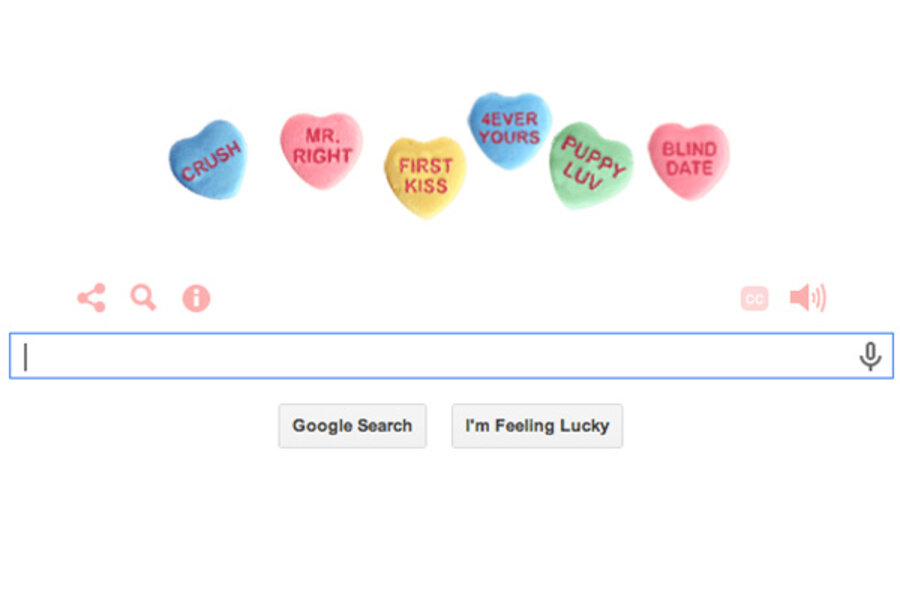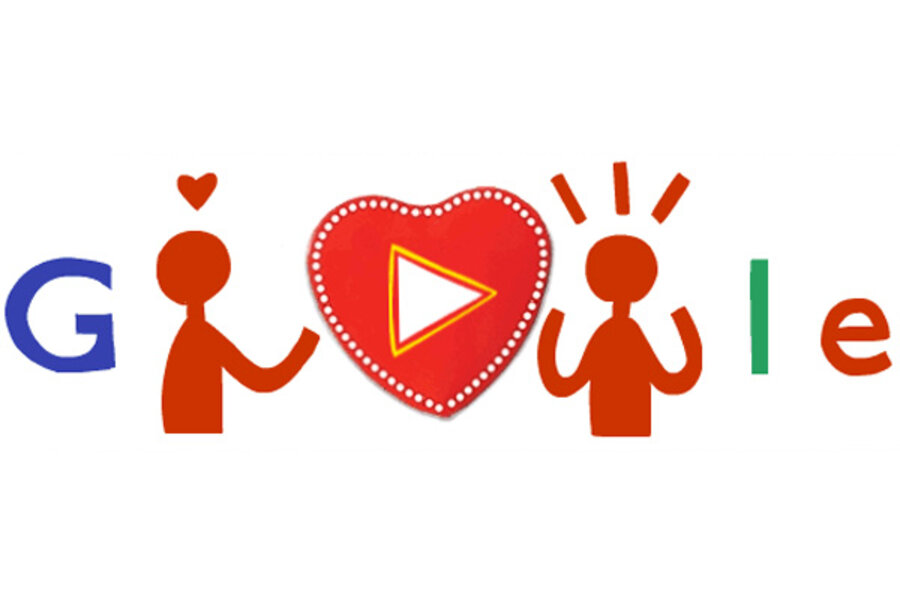A tech lover's guide to hacking Valentine's Day
Loading...
Roses, card, and dinner out? That's so first-generation romance. In this digitized world, it's time to upgrade your holiday to Valentine’s Day 2.0. Whether it’s the meal concocted by the chef of the future, an app that can connect your schedule with a loved one, or a program that will match you up with your most compatible Facebook friend, the tech world has you covered. Here is Valentine’s Day, hacked.
Google Doodle your loved one a box of chocolates
On Friday, Google rolled out an interactive doodle with stories of true love. Ira Glass of "This American Life" introduces this collection of sweet, profound, and well told stories. But there's also a secret Google Doodle today. If you head to google.ca (the Canadian Google site), you'll find an entirely different interactive doodle. This one lets Googlers create their own box of e-chocolates. Googlers can create customizable digital treats with ingredients such as strawberries, caramel, and sprinkles. When finished, people are presented with a link to send to a loved one. The link opens up the box and breaks down each of the three digital chocolates' ingredients. A cute idea, but if you go this route just be sure to also follow up with a real box of chocolates.
Make a romantic GIF
The card industry makes $7 billion per year. Why? The Greeting Card Association estimates that a typical card costs between $2 to $4, and 145 million Valentine’s Day cards are sold each year. That’s a lot of cards.
Don’t want to be a part of the crowd, nor shell out your coffee money for a piece of folded paper? Show your loved one that you’re up on the times by creating or sharing a romantic GIF. Animated GIFs are essentially constantly repeating loops, sometimes combined with text. Take a look at websites like Giphy or Jest for ideas, pick out a few GIFs that describe your feelings toward your loved one (examples: tender hand holding, scenes from romantic comedies), create a blog post on a website to house your GIFs, then send a link to your loved one. Or, if you're up to the challenge, check out these steps to creating your own original GIF. If your date likes it, perhaps they’ll even share it. Who knows? Your proclamation of love could go viral.
3-D print your meal for two
A homemade meal for a loved one is a thoughtful gesture on Valentine’s Day. But a home-printed meal? Your date will not only be touched – they’ll be impressed. Engineers have begun experimenting with 3-D printed food, and the results are not half bad. UK-based Choc Edge offers a 3-D printer expansion pack with syringes and chocolate, and lets you take creative control over chocolate-printed designs. NASA contracted 3-D printer company Systems and Materials Research Corporation to design a prototype pizza maker that prints a layer of dough, cooks it, then tops it off with a powder, water, and oil tomato paste as well as a protein layer. Later this year Natural Machine’s food-focused 3-D printer Foodini will debut, and will offer recipes for ravioli and chickpea nuggets.
Though your loved one will likely be impressed with this feat, your wallet will not be. 3-D printers cost anywhere from $1,000 to $10,000, and food-based sets tend to be in the $4,000 to $5,000 range. It doesn’t let you off the hook for cooking either – usually you put together the recipe, deposit it in the machine, and let the printer do the assembly.
Set the mood with streaming radio
This year, streaming radio stations have taken over music lovers’ ears: from Beats Music to iTunes Radio to Spotify, there is no shortage of online music players to choose from. A hidden bonus of these streaming music sites? Customized playlists. iTunes Radio has a “Love Songs Pop” station, Pandora has a “Love Songs” genre, and mood-based music player Stereomood lets you personalize the romance with playlists titled “candlelit dinner” and “in love.”
Digitize the jewelry box
Jewelry is a pretty standard Valentine’s Day gift, but the tech world has put a new spin on an old trend. Instead of a diamond necklace, how about a QR code necklace? In addition to featuring a funky black-on-silver design, you can customize the QR code with a romantic message or link that your loved one can scan and access with their smart phone. Looking for a digitally-inspired gift for your man? Consider these James-Bond-esque cufflinks: one is a 2 GB flash drive and the other is a Wi-Fi hotspot.
Take the next step in your relationship, via the app store
A major step in many relationships is deciding to move in together. Not ready for that step just yet? Why not move in together digitally, instead? Apps like Between and Avocado sync up couple's schedules, texts, photos together, and important relationship milestones to let long-distance (or inseparable) couples stay connected. Avocado also lets couples send digital hugs and kisses by pressing the phone against their body and kissing the screen. The best part? Both apps are free to download (sure beats moving costs).
No Valentine? The Internet says, "no problem."
No date for Valentine’s Day? The digital world has got you covered once again. Pew Research found that 59 percent of Americans believe online dating is a good way to meet people, and one out of five people ages 25-34 have used online dating. Online dating isn’t confined to Match.com or other profile-centric dating methods anymore. New websites are popping up, such as HowAboutWe, which lets users propose a potential date and matches people based on their activity interests, or Grouper, which sets up drinks between two groups of friends.
More interested in matching up with someone you already know? Facebook and MTV Asia recently teamed up to create “Match Machine”, a program that analyzes your profile, plus the profiles of your Facebook friends, to see who is most compatible with you. Treat it as a fun experiment in social algorithms or an actual road map to your next date – either way, you have the digital world to thank.









